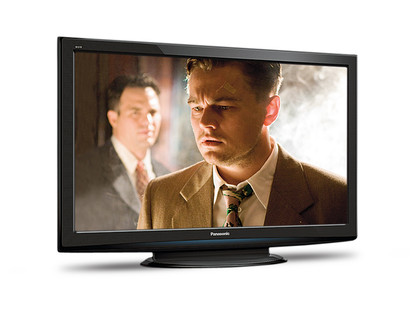Why you can trust TechRadar

The P42S20's pictures do indeed look better than those of last year's S10 series, as we would expect with a NeoPDP panel at the newer TV's heart. But recent advances by some of the best LCD screens also leave its pictures looking a touch dated in a couple of ways.
The main improvement concerns the image's dynamism, thanks to a combination of enhanced black level response and NeoPDP's trademark higher brightness.
On the black level front, dark scenes suffer with only the faintest trace of the grey mistiness still found to some extent on many flat TVs, reminding us of plasma's innate advantage in this key area of picture quality.
Deep blacks
Similarly, dark scenes reveal none of the backlight inconsistency commonly witnessed on LCD TVs, nor any is there any of the haloing seen with all but the very best LCD TVs with direct LED lighting. There's more shadow detail visible during dark scenes too, thanks to the way the P42S20 doesn't need to do as LCD TVs do and drastically dim its brightness to achieve a believable black colour.
It's great, too, that you can watch the P42S20's pictures from almost right angles before dark parts of a picture start to look washed out - another notable plasma strength over the vast majority of LCD screens.
In terms of brightness, the P42S20 can have its brightness output set much higher than the old non-NeoPDP designs, or else you can keep brightness low if you have a dark room, and achieve significant energy efficiencies.
Sign up for breaking news, reviews, opinion, top tech deals, and more.
The P42S20 also impresses greatly with its motion handling, as the '600Hz' engine does a very fine job of tackling the old judder issue that we've noted before as a weakness of some of Panasonic's plasma TVs. What's more, it delivers its motion improvements without throwing up as many side effects as we might have expected.
Sharp SD Freeview pictures
One final strength concerns the P42S20's standard definition upscaling. This wasn't particularly great on last year's low-end Panasonic plasmas, but here it's shifted up a good couple of gears, at least where sharpness is concerned, by the impressive Resolution Enhancement feature.
We'd recommend only setting this to its Mid level, though, since the Max setting can push video noise levels too high.
Less inspiring things about the P42S20's pictures kick off with some occasionally rather unnatural colour tones. Especially evident during standard definition viewing, these issues include slightly orangey or over-pink skin tones, slightly dominant greens, and slightly washed out reds.
We also have to say that the P42S20's HD pictures don't look quite as crisp and pin-sharp as they do on some rivals, despite the screen's full HD resolution. Though actually this arguably isn't a bad thing if you're watching one of Freeview HD's noisier HD broadcasts.
Finally, even the introduction of last year's NeoPDP technology can't prevent the P42S20's pictures from looking a little muted in terms of overall brightness and colour saturation compared with the retina-burning efforts of some LCD TVs.
Current page: Panasonic TX-P42S20: Picture quality
Prev Page Panasonic TX-P42S20: Ease of use Next Page Panasonic TX-P42S20: Sound quality and value
John has been writing about home entertainment technology for more than two decades - an especially impressive feat considering he still claims to only be 35 years old (yeah, right). In that time he’s reviewed hundreds if not thousands of TVs, projectors and speakers, and spent frankly far too long sitting by himself in a dark room.
